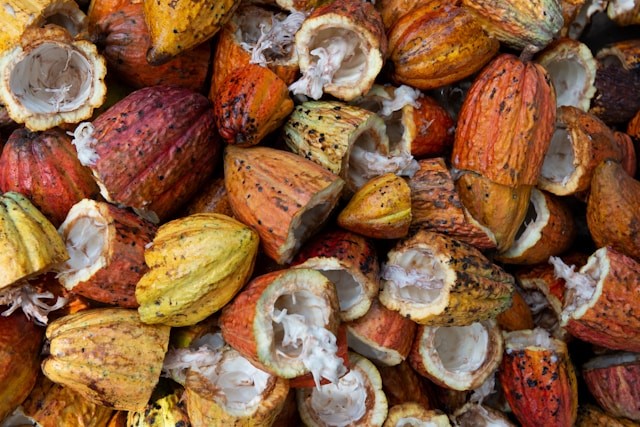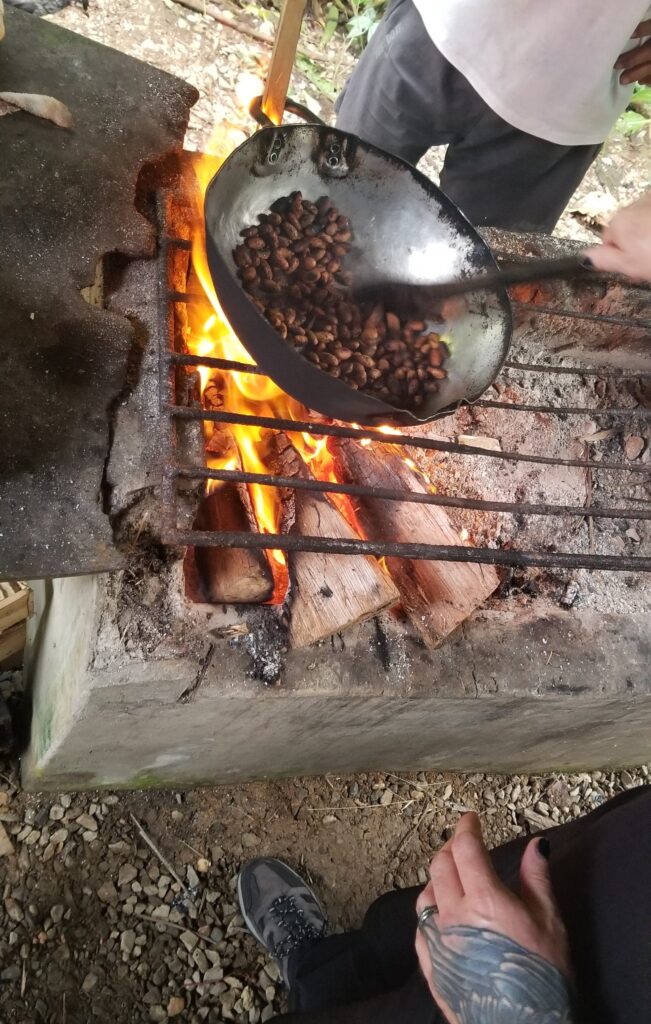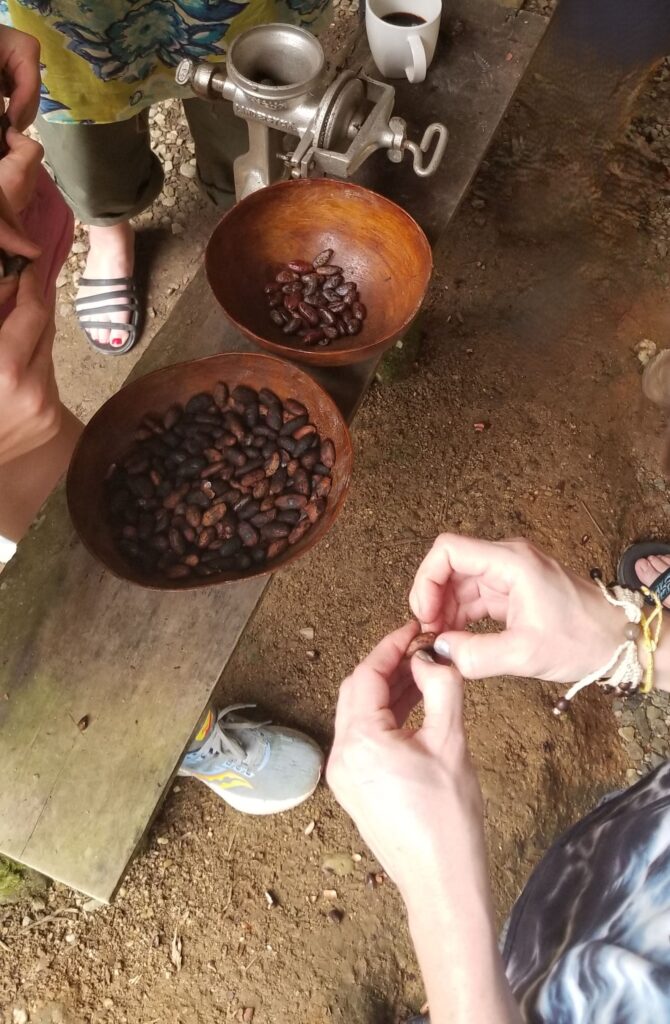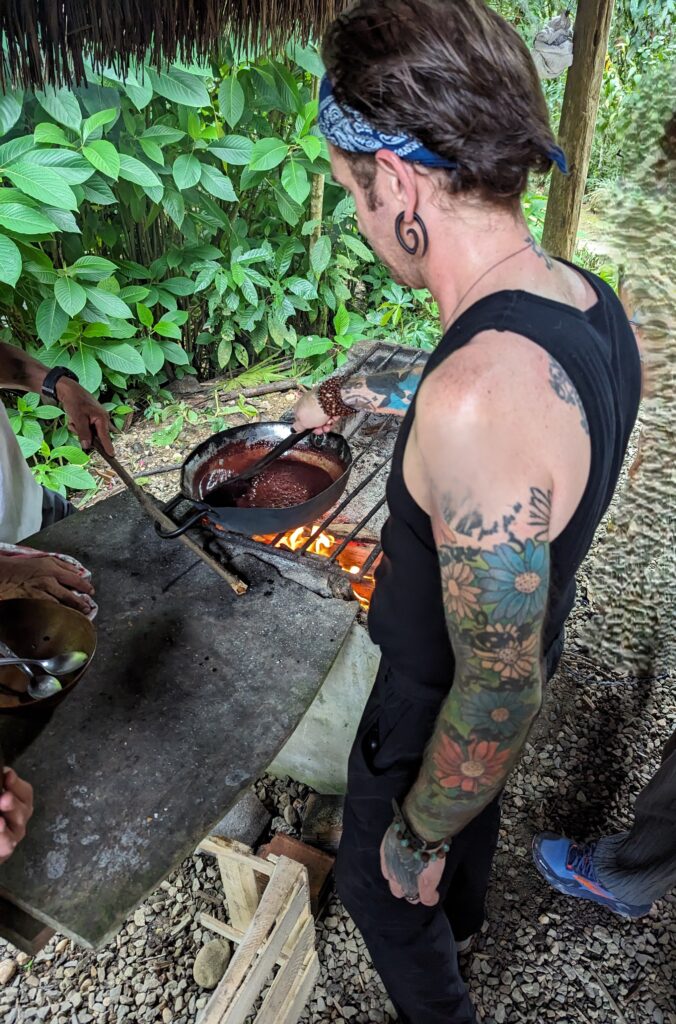Note: Short posts like this one offer a big-picture look at nutrition, lifestyle, and sustainability topics. For a deeper dive into this subject, or any other one, reach out about my virtual classes or one-on-one sessions!
I consider dark chocolate to be a gift directly from nature. Although it doesn’t grow on trees, it is a treasured treat created by combining multiple whole foods together, letting their synergistic magic create an euphoric eating experience.
Dark chocolate is definitely at the top of my list of foods that, combined with a bit of human ingenuity, transforms nature’s raw gifts into something truly special. In addition to the enjoyment of consuming it, in its purest form, chocolate also boasts a multitude of health benefits.
Discovering Cacao
While not a super prevalent locale, my first encounter with the cacao pod was on a very small-scale farm in Cambodia near Siem Reap. Prior to 2017, I had no idea that chocolate started its journey from a tree! I was amazed when someone cracked open a large yellow-ish fruit to reveal seeds nested in a thick, white pulp and offered me one to try, noting that it was a cacao bean, the origin of chocolate!

Photo by Rodrigo Flores on Unsplash
Cacao trees (Theobroma cacao) thrive in warm, humid climates near the equator. These regions are often called “The Cacao Belt” and it covers the area 20 degrees north and south of the equator. These tropical areas make a cozy environment for the cacao tree with rich soil nourished by a healthy amount of rainfall and just the right amount of shade.
The tree itself is a small, evergreen tree that grows between 15-25 feet tall. Instead of growing on branches, its football-shaped pods grow directly out of the tree trunk and larger branches! These pods range from 6-12 inches long and 2-3 inches wide, with thick, leathery shells that encase 20-60 cacao beans inside a soft, sweet pulp. These beans, once fermented, dried, and processed, become the foundation of the chocolate we love.
The Transformation
My second encounter with the cacao bean was during one of my recent travels in Ecuador. My partner and I had the opportunity to stay with a local Quichua community in the Amazon jungle region, close to the Napo River. One of the many beautiful things they shared with us was transforming cacao beans into a decadent treat.
We started by roasting the beans (that had already been dried) over an open flame. Once they cooled a bit, we removed their skin and put them through a manual turn-handle grinder where they became shaved pieces. There’s no way to fully describe the aroma of fresh, warm cacao shavings. It’s like having your senses filled with chocolate! We returned the shavings to the open flame and slowly stirred in a very little bit of fresh sugar cane juice. Once melted, we enjoyed the fresh chocolate with local fruits.



More Than Food
The cacao bean didn’t start its journey as the main ingredient of a sweet treat. Ancient cultures revered it as a sacred gift from the gods. Can’t say I disagree with that! It was enjoyed in all its bitterness, sometimes with a twist of chili or vanilla, by the Mayans. And the Aztecs, who referred to it as xocoatl, believed it provided both wisdom and strength. There’s even accounts throughout history of this precious bean being used as currency.
Today, cacao is still spiritually significant in many cultures. Regardless of the region, there is a common thread that centers around the belief that cacao can help to open up the heart and aid in releasing emotional blocks. Its use is expansive in the world of healing and can oftentimes be found in use alongside plant medicines or with deep-breathing practices.
The Chocolate We Know Today
Unfortunately, most of the chocolate products we see in stores today is often full of refined sugars, chemicals and preservatives. But you don’t have to visit one of its organic growing regions to experience it in all its glory! There are many chocolate makers today that pay homage to the origins of this sensory-engulfing treat. Here are a couple of my favorites:
HU dark chocolate bars that have only three ingredients!
Honey Mama’s Chocolate bars sweetened with organic raw honey
Chocolate-buying tips:
The fewer the ingredients, the better! Make sure you recognize all the ingredients listed.
Look for chocolate without refined sugar. Sugar alcohol and refined sugar can cause major damage to your body. Many high-quality chocolates will use unrefined coconut sugar or honey.
Go for dark chocolate with over 70% cacao. Higher cacao concentration means more nutrients and less sugar and additives.
The Health Benefits of Chocolate
While you may not need any convincing or reason to consume chocolate regularly, high-quality dark chocolate is full of health benefits!
- High in antioxidants that neutralize free radicals & protect the body from oxidative stress
- Contains fabulous flavonoids that can improve blood flow, lower blood pressure, improve cognitive function, enhance memory, & reduce the risk of neurodegenerative diseases
- Stimulates the release of endorphins and serotonin, improving mood & potentially acting as a natural antidepressant
- Good source of minerals like iron, magnesium, & copper that support overall health
Want to learn more about nutrition and connecting to your ancient stirrings? Sign up for my next set of virtual group classes!
Subscribe for my monthly newsletter featuring the latest articles and recipes.
I hope you loved all the chocolate talk! Feel free to leave a comment below with your experience—questions are always welcome too.